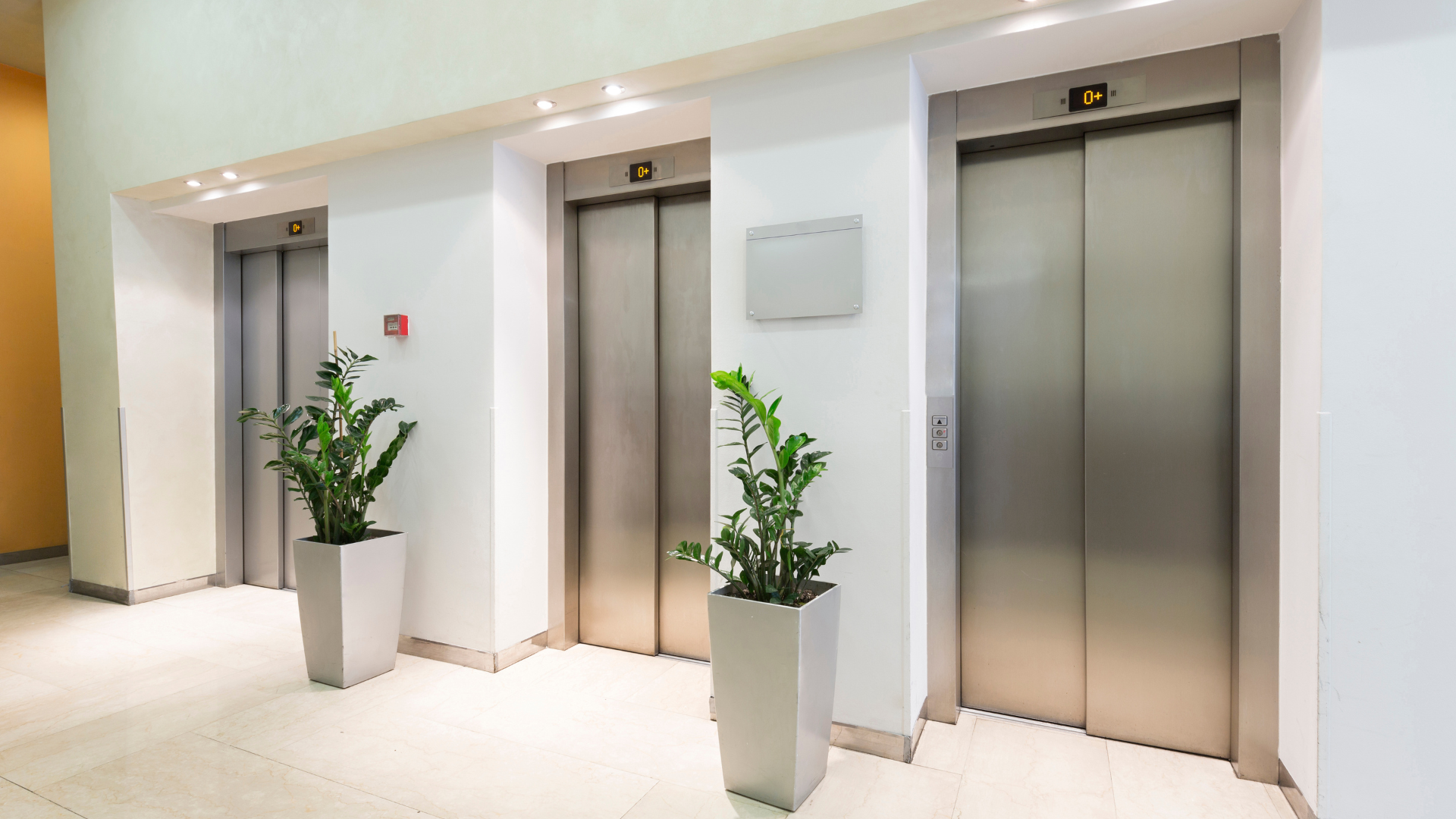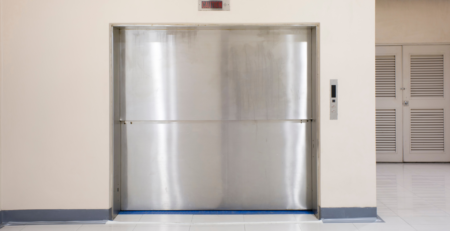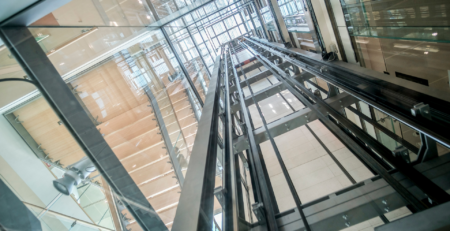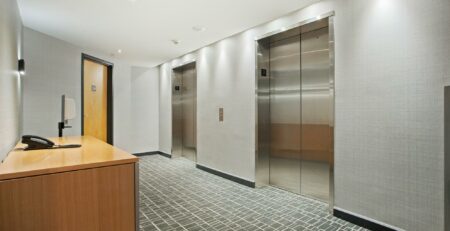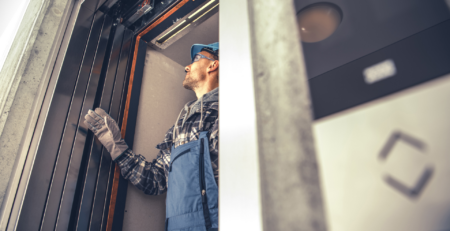Hydraulic Elevator vs. Traction Elevator: Which Is Right for You?
Every building has its unique structural and operational demands, and the wrong type of elevator can lead to a cascade of issues, from increased maintenance costs to inefficient energy usage.
This article tackles this pressing dilemma head-on. By dissecting the traction vs. hydraulic elevator debate, we’ll get into the specifics of pros and cons, costs, features, energy usage, and installation nuances.
Read on to uncover the insights needed to make a decision that not only enhances the functionality of your property but also aligns with its long-term operational goals.
Overview of Hydraulic Elevators
Hydraulic elevators have been a reliable choice in the world of vertical transportation for many years. They operate using a hydraulic system, which consists of a fluid-driven piston mounted inside a cylinder. This system propels the elevator car up and down through varying fluid pressure.
One of the standout features of hydraulic elevators is their straightforward installation process. It makes them a practical option for low to mid-rise buildings.
The strength of hydraulic elevators lies in their robust lifting capabilities. This makes them ideal for buildings with fewer floors but requiring heavy lifting capacity.
Their installation costs are generally lower compared to traction elevators, as they don’t need extensive overhead machinery or a deep pit. This cost-effectiveness is a significant advantage. Especially for smaller buildings with budget constraints.
However, when discussing hydraulic vs. traction elevator energy usage, it’s crucial to note that hydraulic elevators are less energy-efficient. They consume more power per floor traveled. This is primarily because the hydraulic pump must work against gravity to lift the elevator.
This increased energy usage can impact long-term operational costs. Despite this, the durability and reliability of hydraulic elevators continue to make them a popular choice in specific building types.
Overview of Traction Elevators
Traction elevators, on the other hand, operate using a system of ropes and pulleys. They are driven by motors that move the ropes, which in turn lift or lower the elevator car. This design makes traction elevators ideal for high-rise buildings where extended vertical travel is necessary.
One of the primary hydraulic vs. traction elevator features that set traction elevators apart is their speed and efficiency. They can travel faster and handle more stops than hydraulic elevators. This makes them suitable for tall buildings with high traffic.
The design also allows for smoother rides and requires less space in the building’s structure. This is because they do not need a machine room like hydraulic elevators.
Regarding hydraulic vs. traction elevator costs, traction elevators tend to be more expensive upfront due to their complex machinery and installation requirements. However, they are more energy-efficient compared to hydraulic elevators.
This efficiency stems from their counterweight system. It balances the weight of the car and reduces the amount of energy needed to move it. Over time, this energy efficiency can lead to cost savings in utility bills, particularly in buildings with frequent elevator usage.
Traction vs. Hydraulic Elevator Pros and Cons
Starting with speed and efficiency, traction elevators have the upper hand. They move faster and are better suited for high-rise buildings where swift vertical transport is vital. On the other hand, hydraulic elevators are slower but provide a powerful lifting solution, ideal for buildings with fewer floors.
The aspect of space requirement is another crucial difference. Hydraulic elevators require a machine room, which can be a limitation in buildings with space constraints.
Traction elevators often come with a machine-room-less option and offer a sleeker, more space-efficient design. This difference can be a deciding factor for buildings where space utilization is critical.
Discussing hydraulic vs. traction elevator costs, the initial installation cost of hydraulic elevators is generally lower. However, in the long run, traction elevators can be more cost-effective due to their lower energy consumption and maintenance needs. This makes traction elevators a more sustainable choice for buildings with a focus on energy efficiency and long-term cost savings.
Hydraulic vs. Traction Elevator Installation
When it comes to installation, the right choice often depends on the building’s specific requirements.
Hydraulic elevators, with their simpler design and lower installation complexity, are typically chosen for low-rise buildings, usually up to five or six stories. They are also preferred in cases where heavy lifting capacity is needed, such as in industrial buildings or freight applications.
Traction elevators, with their capability to travel faster and higher, are the go-to option for mid to high-rise commercial buildings, such as office towers and luxury apartment complexes.
Their installation is more complex and requires careful planning and consideration of the building’s structure. The need for a more intricate pulley and counterweight system means that the installation process takes longer and requires more technical expertise.
Future-Proofing with Technology
Both hydraulic and traction elevators have embraced technological advancements to make them more efficient, user-friendly, and adaptable to future changes.
For hydraulic elevators, advancements in hydraulic systems and controls have led to improved energy efficiency and smoother operation. Modern hydraulic elevators now incorporate variable frequency drives (VFDs), which allow for more precise control of the elevator’s speed and position.
This not only enhances the ride quality but also reduces energy consumption. This addresses one of the traditional downsides of hydraulic elevators.
Traction elevators have seen significant tech upgrades too. The integration of regenerative drives is a game-changer. They allow these elevators to generate electricity during operation, which can be fed back into the building’s power grid.
This technology not only reduces the overall energy consumption of the building but also aligns with sustainability goals.
In both types, the incorporation of smart technology is making elevators more efficient and easier to maintain. Remote monitoring systems can predict maintenance needs and identify issues before they become major problems. The outcome is minimized downtime and an extended lifespan.
The Right Fit for Your Property
Making the right choice between a hydraulic elevator and a traction elevator can be daunting. Toledo Elevator, with decades of experience in vertical transportation, stands ready to guide you through this crucial decision. Our expertise in both types of elevators ensures that your property receives a solution tailored to its unique needs, backed by our commitment to safety, efficiency, and customer satisfaction.
Don’t let uncertainty dictate your decision. Reach out to Toledo Elevator for advice rooted in experience and a free, no-obligation quote.

Sammy Assaf leads Toledo Elevator, setting the bar high in the elevator service industry with innovative solutions and unmatched customer service. Sammy’s extensive knowledge of elevator systems, combined with a dedication to safety and efficiency, ensures Toledo Elevator offers comprehensive services that meet the modern demands of building management. The company prides itself on advancing elevator technology and maintenance, providing valuable insights into the latest trends and safety standards to keep elevators running smoothly and safely.

